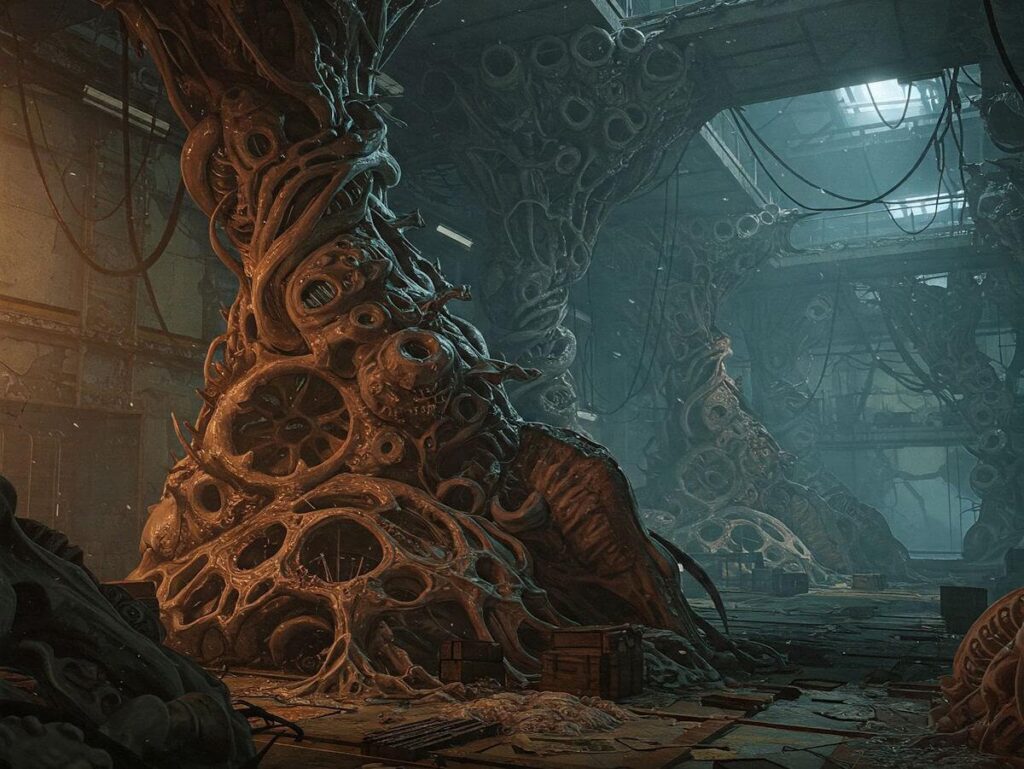The release of Metroid Prime Remastered marks a pivotal moment within the renowned Metroid franchise and the broader gaming landscape. Originally launched in 2002, the iconic title has garnered a dedicated following, showcasing innovative gameplay and an immersive atmosphere that set a benchmark for action-adventure titles. The remaster aims to modernize this beloved classic while preserving the essence that has captivated gamers for two decades.
Remastering a classic game such as Metroid Prime serves multiple purposes. Primarily, it offers a fresh opportunity for both long-time fans and new players to experience the game in a contemporary format, equipped with enhanced graphics, improved controls, and updated mechanics. Such improvements are crucial in keeping the game relevant in today’s fast-evolving gaming environment where players expect high standards in terms of visuals and gameplay fluidity. Moreover, this remastered edition encapsulates nostalgia, evoking emotional responses from players who have fond memories of their original experiences.
With the rich legacy of the Metroid series, expectations surrounding Metroid Prime Remastered are considerable. Fans are eager to witness not just visual enhancements, but also to see if the remaster will maintain the depth of exploration and storytelling that defined the original. Furthermore, the remaster serves to attract a new generation of gamers who may not have had the opportunity to experience the original title, thereby expanding the franchise’s reach and relevance.
In embracing nostalgia while promoting innovation, Metroid Prime Remastered stands at the intersection of past and future gameplay experiences. As anticipation builds within the gaming community, players reflect on how the game has influenced their journeys and understanding of the medium, setting the stage for an exciting revival of a classic franchise.
A Brief History of the Metroid Franchise
The Metroid franchise originated with the release of the first game, Metroid, in 1986, developed by Nintendo. It introduced players to the galactic bounty hunter, Samus Aran, as she navigated the sprawling, interconnected world of Zebes, tasked with retrieving stolen Metroid specimens from the Space Pirates. This title was groundbreaking at the time, particularly due to its atmospheric exploration and the revelation of Samus’s gender, which challenged the conventional norms prevalent in gaming.
Following the success of the original title, the Metroid series saw several important entries. The sequel, Metroid II: Return of Samus, was launched for the Game Boy in 1991, expanding the lore and gameplay mechanics. However, it was the release of Super Metroid in 1994 for the Super Nintendo Entertainment System that truly solidified the franchise’s reputation. This game is widely regarded as one of the best video games ever made, with its intricate level design and immersive gameplay establishing the blueprint for the genre that would come to be known as Metroidvania.
A new era for the franchise began with the introduction of Metroid Prime in 2002. Developed by Retro Studios, this title was a significant departure from the series’ traditional 2D side-scrolling gameplay, transitioning to a first-person perspective while retaining the exploration and atmospheric storytelling intrinsic to the franchise. The game was critically acclaimed for its innovative design, parsing a 3D space in a way that retained the series’ essence while appealing to a new generation of gamers. Metroid Prime revitalized interest in the franchise and demonstrated its potential beyond traditional gaming formats.
The success of Metroid Prime led to two direct sequels and numerous spin-offs, all contributing to the enduring legacy of the Metroid franchise. Today, as the franchise is revisited with remastered editions, it continues to capture the imagination of both longtime fans and newcomers alike.
Visual and Audio Enhancements
Metroid Prime Remastered introduces a plethora of visual and audio enhancements that elevate the classic experience while maintaining its nostalgic essence. The graphical improvements are immediately noticeable, with fully updated character models that reflect the intricate design and detailing expected from modern gaming. The textures have been refined, bringing a higher resolution that resonates with players who appreciate visual fidelity. Environmental details are also significantly upgraded, with richer foliage, enhanced lighting effects, and more dynamic shadows, creating an immersive world that players can explore.
The improvements are not limited to static visuals; animations have been smoothly transitioned into the remaster, resulting in more fluid character movements and interactions within the game. The original aesthetic remains intact, but it is paired with contemporary design elements that refresh the overall appearance of the beloved title. The balance between retro charm and modern appeal is executed with care, ensuring that long-time fans can relish the essence of Metroid Prime while captivating new players through modern visuals.
In addition to the enhanced graphics, the audio design has undergone a significant transformation. The soundscape features upgraded sound effects that are both crisp and immersive, contributing to a richer gameplay experience. Iconic soundtracks have been re-orchestrated, maintaining the original themes while enhancing the overall depth and quality of the music. This not only amplifies the nostalgic atmosphere but also extends an inviting experience for newcomers to the series. The preservation of the classic sound design elements paired with new enhancements demonstrates a thoughtful approach aimed at engaging both dedicated fans and new audiences, amplifying the emotional undertone that Metroid Prime has long been celebrated for.
Gameplay Mechanics and Controls
Metroid Prime Remastered successfully captures the essence of the original while making significant updates to gameplay mechanics and controls tailored for modern consoles. This adaptation enhances the experience for both veterans of the series and newcomers alike. Key to this improvement is the redefined control scheme that introduces dual analog stick support, providing players with more fluid and responsive movement options compared to the classic GameCube controls. The remake embraces the intuitiveness of contemporary gaming, allowing for precise aiming and navigation that enriches the overall gameplay.
Moreover, the user interface has undergone notable enhancements, with revamped menus and an easier-to-navigate HUD that incorporates essential gameplay information more seamlessly. This modern design ensures that players can quickly access vital data, such as item inventories and maps, facilitating exploration without overwhelming the user. The streamlined interface encourages immersive engagement with the game world, encouraging exploration and discovery akin to the original.
Exploration remains a core aspect of what made the original Metroid Prime a landmark title. The remaster reintroduces the vast and intricately designed environments, with updated visuals that bring the alien landscapes to life while retaining their original charm. Players are encouraged to scour the expansive areas for power-ups and secrets, enhancing the depth of this exploration mechanic. Additionally, the combat system has been refined, enabling smoother engagements with enemies and better integration of various weapons and enhancements. The redefined puzzle-solving elements also resonate with players, as they maintain the critical thinking aspect that is a hallmark of the Metroid series. Overall, the refined gameplay mechanics and controls in Metroid Prime Remastered exemplify how a classic can evolve while preserving its iconic qualities.
Nostalgia Factor: Recalling the Original
The release of Metroid Prime Remastered stirs profound feelings of nostalgia among veteran gamers, particularly those who experienced the original Metroid Prime on its initial launch in 2002. This iconic first-person adventure defined a genre and created lasting memories through its immersive world, engaging gameplay mechanics, and atmospheric storytelling. Upon revisiting the remastered version, players are met with a familiar yet polished experience that successfully rekindles that initial sense of wonder.
One standout moment that spurs nostalgia is the opening sequence, where players first don the iconic Samus Aran’s suit. The eerie silence of the planet Tallon IV, combined with the haunting musical score, effectively sets a tone of isolation and exploration. While the remastered edition elevates the graphics and sound design, the core of this experience remains intact, invoking strong emotions tied to the original. Players are immediately transported back to their first encounters with the game’s environments, filled with haunting memories of exploring the Phendrana Drifts and battling formidable enemies, such as the Metroids themselves.
Additionally, gameplay mechanics that defined the original have been refined in the remastered version, enhancing the nostalgic experience without detracting from it. The control system feels contemporary while retaining the intuitive feel that long-time fans enjoyed. Elements like scanning for lore and collectibles, which were vital in building the game’s atmosphere, remain crucial in the remaster. Players also benefit from quality-of-life improvements, such as updated controls and visual fidelity, which complement the nostalgic journey rather than overshadow it.
In comparison to the original, Metroid Prime Remastered successfully balances the bittersweet sentimentality of nostalgia with innovative enhancements, ensuring that both new and returning players can cherish the essence of this beloved franchise. This delicate blend of old and new not only reassures veterans but also invites a fresh generation to explore the depths of Samus’s universe.
Adding New Features and Quality of Life Improvements
The remastering of Metroid Prime has brought forth a host of new features and quality-of-life improvements that enhance the gameplay experience while paying homage to the classic title. One of the most notable changes is the introduction of customizable controls, allowing players to tailor their gaming experience to their preferences. This feature not only accommodates different play styles but also ensures that both new and veteran players can engage comfortably with the game’s intricate mechanics.
Moreover, the remaster introduces enhanced save features, a crucial aspect that significantly reduces the frustrations often associated with older gaming systems. Players can now expect more frequent save points and the option to save at will, which preserves the challenge of exploration without the anxiety of losing achievements after prolonged sections of gameplay. This balance between maintaining difficulty and providing convenience demonstrates a thoughtful approach to modernizing the title.
Additionally, various visual and auditory enhancements have been implemented, elevating the immersive experience of the game. Updated graphics, improved frame rates, and refined sound design breathe new life into the environments and characters, ensuring that the essence of Metroid Prime remains intact while appealing to contemporary gamers’ standards for quality.
It is worth noting that the essence of exploration and challenge has not been sacrificed in the name of modernization. The clever design choices that require players to think critically and navigate complex environments are still present, inviting discovery and engagement. The remaster serves not only as a nostalgic revival but as a platform that melds classic gameplay mechanics with modern accessibility, successfully catering to those who seek both the thrill of challenge and the conveniences of today’s gaming expectations.
Critical Reception and Community Feedback
Upon its release, Metroid Prime Remastered garnered considerable acclaim from critics and players alike, highlighting its successful blend of nostalgia and modern gaming elements. Many reviewers praised the remaster for its graphical enhancements, which breathed new life into the original’s captivating environments. The updated visuals, combined with improved controls, allowed both new players and longtime fans to appreciate the intricate world of Tallon IV more fully. The seamless transition from the original to the remastered version was particularly lauded, as it retained the essence of the franchise while introducing enhancements that made gameplay smoother and more accessible.
However, the remaster was not without its critiques. A segment of gamers expressed concerns regarding certain design choices, specifically regarding some gameplay mechanics that felt dated when compared to contemporary titles. Additionally, while the reimagined graphics were well received, a few players felt that certain aesthetic choices strayed too far from the original game’s charm. This rift in opinions showcases the challenge of remastering such beloved titles, as developers must balance innovation with fan expectations.
Community feedback highlighted the remaster’s ability to evoke nostalgia, with many players sharing their fond memories of the original game. Social media platforms buzzed with discussions around the remastered soundtrack, which some players felt enhanced the atmospheric experience. Nevertheless, divisive opinions also emerged regarding certain updates, with some fervent fans advocating for a more traditional approach to the remaster. Overall, Metroid Prime Remastered has sparked an engaging dialogue within the gaming community, emphasizing the intricate relationship between nostalgia and modern gaming experiences.
The Future of the Metroid Franchise
The release of Metroid Prime Remastered has ignited a fresh wave of interest in the Metroid franchise, raising various possibilities for its future. Fans are eagerly anticipating what new titles or sequels could emerge, potentially expanding the rich lore and gameplay mechanics established by earlier games. The success of this remaster not only serves as a nostalgic return for longtime players but also attracts a new generation, thereby creating a larger audience for future entries.
One of the most significant impacts of Metroid Prime Remastered is its potential to inspire developers to revisit past titles. The positive reception of remasters can encourage game studios to invest in reviving classic franchises, potentially leading to sequels that build upon acclaimed narratives and gameplay. As players express their desire for more content within the Metroid universe, the demand can spur innovation, motivating creators to explore new narrative paths or expand gameplay mechanics while remaining faithful to the series’ roots.
Moreover, remasters have become a strategic avenue for gaming companies looking to bolster their portfolios. They not only extend the lifespan of beloved franchises but also introduce them to contemporary audiences. If Metroid Prime Remastered achieves substantial commercial success, it could pave the way for other Metroid titles, greenlighting projects that might have previously been stalled due to a lack of market interest. This creates a cycle where successful remasters breathe new life into dormant franchises, reiterating the importance of nostalgia in gaming.
In conclusion, the future of the Metroid franchise looks promising, with the potential for new titles grounded in the legacy of beloved classics. As the gaming industry evolves, remasters such as Metroid Prime Remastered hold the key to not only celebrating the past but also ushering in a new era of adventures for both old and new fans alike.
Conclusion: A Testament to Legacy and Innovation
Metroid Prime Remastered stands as a remarkable example of how remastered titles can effectively capture the essence of their predecessors while integrating modern enhancements. This delicate balance between nostalgia and innovation allows the game to resonate with both longtime fans and newcomers alike. As we have explored, the updated graphics, refined controls, and improved audio quality not only breathe new life into the original gameplay but also serve to remind players of the groundbreaking experiences that Metroid Prime offered upon its initial release. The infusion of contemporary design philosophies and technical advancements showcases the franchise’s ability to evolve while maintaining the core elements that defined its legacy.
The importance of preserving gaming history cannot be overstated, and remasters play a pivotal role in ensuring classic titles remain accessible in an era of rapidly advancing technology. Through meticulous care in the remastering process, developers can bring iconic games like Metroid Prime to a fresh audience, introducing a new generation of players to significant milestones in gaming history. This process not only fuels nostalgia for veterans of the series but also fosters an appreciation for classic gameplay mechanics and storytelling elements among those encountering the title for the first time.
In essence, Metroid Prime Remastered exemplifies the enduring legacy of the Metroid franchise, demonstrating that remakes can successfully merge the old with the new. As it reinvigorates an iconic title with thoughtful improvements, it serves as a testament to the valuable role remasters play in preserving the heritage of gaming, ensuring that timeless experiences continue to be enjoyed by players around the world. In conclusion, Metroid Prime Remastered is not merely a retrospective look at a beloved game but a celebration of innovation within the realm of video gaming.





